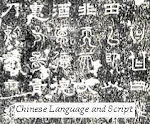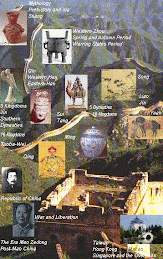
Traditional Chinese Medicine-Bencao gangmu 本草綱目
---Traditional Chinese Medicine Guide
植物藥類〉:〈草部山草類〉〈人參〉
【釋名】人濅(浸)音參,或省作濅...人濅年深,浸漸長成者,根如仁形,有神,故謂之人濅、神草.
【集解】人參生上黨山谷及遼東.二月、四月、八月上旬採根,竹刀刮、暴干,無令見風...上黨,今潞州也.民以人參為地方害,不復採取.今所用者皆是遼參.其高麗、百濟、新羅三國,今皆屬於朝鮮矣.其參猶來中國互市.亦可收子,於十月下種,如種菜法.秋冬採者堅實,春夏採著虛軟,非地產有虛實也...宋蘇頌圖經本草所繪潞州者,三丫五葉,真人參也.
Herbs: Mountain herbs: Ginseng
Explanation of the name: Renshen, or short Shen. [...other names] It is a perennial plant that grows slowly, step by step; its root resembles a person. It contains spirits and is therefore called "Spirit herb".
Collected explanations: Ginseng grows in the valley of Shangdang Mountain and in Liaodong. In the begin of the 2nd, 4th and 8th month, the roots are collected and cut with a bamboo knife. It has to be kept in a dry place and must not be exposed to wind. [...] Shangdang is in modern Luzhou prefecture. The people there use ginseng as a local medicine; it can only be harvested once. Now, most ginseng comes from Liaodong (modern Liaoning). It is very widespread in Koryo, Paekche and Silla, old kingdoms of modern Choson (Korea), but can also be found in every Chinese town. The seeds are also purchaseable and are planted at the end of the 10th month, according to the use. In autumn and winter, the fruits are harvested. [...] The picture in Su Song's Tujing bencao from the Song Dynasty shows a ginseng from Luzhou with three twigs and five leaves. This is the proper ginseng.
【主治】補五臟,安精神,定魂魄,止驚悸,除邪氣,明目開心益智,久服輕身延年...治男婦一切虛證,發熱自汗,眩運頭痛,反胃吐食,痎瘧,滑瀉久痢,小便頻數淋瀝,勞倦內傷,中風中暑,痿痹,吐血嗽血下血,血淋血崩,胎前產後諸病.
Use for curement: Ginseng is a tonic for the five organs, it appeases the nerves, it fixes the soul, stopps nervosity, eliminates bad breath, enlightens the eyesight, opens the heart and nourishes the wisdom, taken over a long time, it can prolengthen the lifespan. [...] It heals all deficiencies of vital energy of men and women, heats the body and stimulates transpiration, takes away confusion and headache, prevents nausea after a meal, and the intermittent fever, makes easier the evacuation of the bowels, heals inner injuries, temperates head and body temperature, relaxes paralysis, reduces the loss of blood in every way, and heals diseases before and after childbirth.
【附方】人參膏:用人參十兩細切,以活水二十盞浸透,入銀石器內,桑柴火緩緩煎取十盞,再以水十盞,濾汁煎取五盞,與前汁合煎成膏,瓶收,隨病作湯使.丹溪曰:多欲之人,腎氣衰憊,咳嗽不止,用生姜、橘皮煎湯化膏服之.
Medical administration: Ginseng paste: use ten liang (a weight measure) of ginseng, cut is tiny pieces, soak these with twenty cups of fresh water and keep it in a vessel of silver stone. Over a fire of mulberry wood, cook this mixture slowly down to a volume of ten cups, filter the juice; add ten cups of water and cook down to a volume of five cups, cook it again together with the first sirup to a paste. Store this paste in a bottle and make a soup of it in case of illness. Danxi says, if you should need it for many people, exhaused and weak by a bad qi of the kidneys, and if it does not cure cough, use ginger instead, and cook a paste of it together with orange peels.
from chinaknowledge










No comments:
Post a Comment